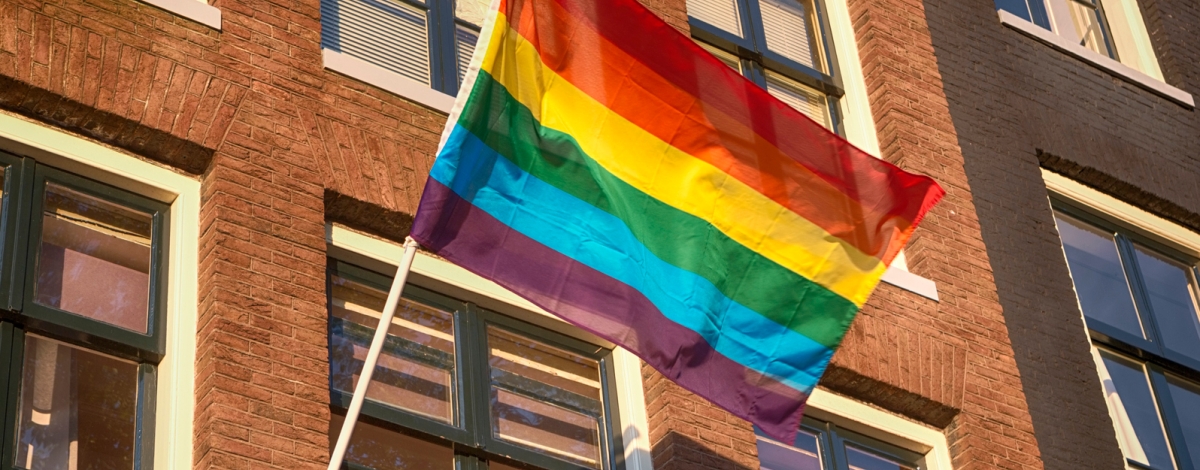The History of Pride Part 1: Events That Made An Impact
It was not easy being LGBTQ+ in the 1960s and preceding decades. Coming out as gay, lesbian, bisexual, or transgender often led to people being kicked out of their homes, ostracized by their family and friends, and losing their jobs. In New York City, it was illegal for people to solicit others of the same sex or engage in gay behavior, including holding hands, kissing, or dancing with someone of the same sex. Additionally, cross-dressing was illegal, meaning that you could be arrested for dressing in clothes for people of the opposite sex. Because their public behavior was extremely policed, many people in the LGBTQ+ community considered gay bars and clubs to be the “safest” places where they could be themselves. However, the police frequently raided these establishments and arrested anyone engaging in those illegal behaviors. In the late-1960s, LGBTQ+ people, especially transgender activists of color, fought back against the discrimination they were facing. This started the biggest LGBTQ+ movement in history. Here are some prominent events that started the movement towards LGBTQ+ equality:
The Stonewall Uprising:
The Stonewall Inn, a gay club in New York City, was known to welcome all LGBTQ+ people, including drag queens and runaway and homeless LGBTQ+ youth. In the early morning of June 28, 1969, the police raided the Stonewall Inn and arrested 13 people. Those arrested included employees of the club as well as people who were cross-dressing. While all of this was happening, the patrons who were kicked out of the bar gathered outside of the bar to protest the arrests of people in the LGBTQ+ community. When an officer used his baton to hit Stormé DeLarverie in the head, the rioting began. Within minutes, hundreds of people gathered outside of the bar, throwing bricks, bottles, and rocks at the club and police officers, and set the Stonewall Inn on fire. Rioting and protests continued over the next six days. These events, soon to be known as the Stonewall Riots, gave a voice to LGBTQ+ people and began a movement that many people consider to be the catalyst for LGBTQ+ liberation. In late-June of 1970, cities around the country held the first Pride Parades to commemorate the impact that the Stonewall Riots had on the nation. Because the Stonewall Riots began in June, June has been declared Pride Month and is celebrated around the world.
Compton’s Cafeteria Riot:
In August of 1966, three years before the Stonewall Uprising, a groundbreaking riot in the name of trans rights broke out in Gene Compton’s Cafeteria. Compton’s was a 24-hour cafeteria in San Francisco that was frequented by trans women, drag queens, and gay hustlers. The employees of Compton’s regularly called the police at night, wanting to clear the place out of LGBTQ+ people. When the police raided Compton’s, they harassed and arrested trans women and drag queens for “female impersonation.” One early morning in August of 1966 (the exact date is unknown), when a police officer grabbed a drag queen in Compton’s, she threw a cup of coffee in his face. In that moment, the other drag queens and trans women present started rioting. They flipped tables, threw cutlery and sugar shakers, and hit police officers with their purses. People outside of Compton’s fought back as police tried arresting them, destroyed a cop car, and set a newsstand on fire. This event became known as the Compton’s Cafeteria Riot and was “the first known instance of collective militant queer resistance to police harassment in United States history,” according to Susan Stryker, historian and director of the documentary Screaming Queens. The Compton’s Cafeteria Riot represents the first movement for transgender rights in San Francisco, and shone light on the discrimination that trans women and drag queens regularly faced.
Remembering the truths of the Stonewall Uprising and the Compton’s Cafeteria Riots will help that fight. Both of these events were riots led by trans women of color, two essential facts about these events that are often forgotten. The Stonewall Uprising was not a peaceful protest, it was angry, violent riots to protest the police harassment that the LGBTQ+ community was facing. The 2015 film Stonewall misrepresents history by whitewashing the riots. The film features white gay men as the leaders of the riots, when it was actually trans women of color. It is essential that we remember the truths of these events because trans women of color deserve credit for the strides the US has made towards equality. They have faced a disproportionate amount of violence and have been ostracized from the LGBTQ+ community, so we cannot perpetuate their erasure from history. In Part 2 of this blog, you will learn about the true leaders of the LGBTQ+ fight for equality.




 Back
Back